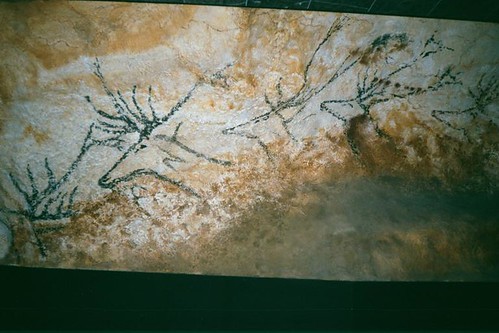Cantabria groundwater: Geological and artistic heritage
Cantabria is a region which retains more underground artistic heritage recognized by UNESCO. A great geological diversity is treasured wealth of eccentric formations of stalactites and stalagmites that decorate profusely each and every one of their caves. During a visit to Cantabria has the opportunity to visit three great places as Montecastillo Soplao and the renowned caves of Altamira, also known as the Sistine Chapel of Prehistoric Art.

Photography by rover0
Cantabria is the first world power in the paleontological art, here are nine caves declared World Heritage by UNESCO, which show the unique and natural potential underground Cantabria. As stated by President Miguel Revilla recently during the inauguration of the Research Center of the Museum of Archaeology and Prehistory of Cantabria (MUPAC), «it is a priceless heritage» which makes the region «the first world power in paleontological art «and the need to give to the world.
Origin of the paintings:
The representations of ancient rock paintings and emblematic of the world are in Spain and France. It is prehistoric drawings by primitive men made directly on the walls of caves or caverns and historically under the transition period from the Paleolithic to the Neolithic. In Spain remains one of the most representative example of this, the caves of Altamira. These are just a few kilometers away from the Cantabrian town of Santillana del Mar.

Photography by A.M. Kuchling
Altamira or the origin of man:
One of the first proof of the existence of homo sapiens is found in Cantabria, in the original caves of Altamira. Although closed to the public since 2002, there is a reliable reproduction of the caves, within an interactive museum where you can appreciate the evolution of man from cave-dwelling ancestors up to the current homo erectus. It is also an accurate reflection of the early art of man. Most of these paintings represent animals and lines that took advantage of cracks in the rock to draw the outline of figures such as boars, arrows or bison. Up to 50 paintings adorn the cave, where the bison one of the most representative drawings are preserved until today.
Caves Montecastillo – Montecastillo caves in the Cantabrian region of Puente Viesgo, offer spectacular stalagmite formations, produced by the deposition of calcium carbonate. These caves are characterized by a profuse decoration of hands, 33 in particular, for the most part right-hand impressions of the artist, because this side was associated with the future and, accordingly, with the sense of looking forward. The material used for the realization of these paintings was the limonite and coal. The red disc lines were obtained by blowing paint onto the wall using primitive tubes or airbrushes. Castle rooms were frequented since ancient times as an area of prehistoric art and burial.

Photography by rover0
Cueva El Soplao:
Located in the Sierra de Arnedo, the cave was discovered Soplao early twentieth century during the operation of the mines of Florida and is considered one of the great wonders of geology, with over 30 kilometers of galleries, towers, kilns or laundry. One of the most recent discoveries and increasingly powerful in this cave has been a field of blue amber. The Soplao is the last cave to open its doors to the public, that since 2005, which is excellently preserved and is also wheelchair accessible to 90% of its facilities. The interior has also been used as a stage for classical music concerts, due to the excellent sound of their sockets.
For the more adventurous, the route Soplao also offers a two and a half hours in which visitors can tour the original floor of the cave and access to the most remote areas of the cavity. The organization provides the right equipment for the visit: light helmet, overalls and rubber boots.
And so we count more than sixty cavities that form an extensive artistic, historical and geological in Cantabria, a province full of surprises and open to the world thanks to its underground discoveries attest to several billion years.
Good luck!
Leave a Reply
You must be logged in to post a comment.
Recent Comments